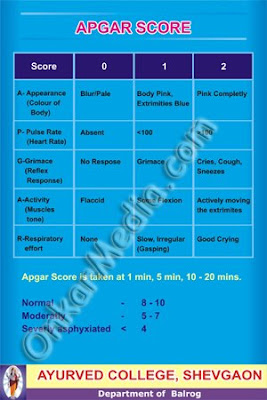

The purpose of this statement is to place the Apgar score in its proper perspective. Because there are no consistent data on the significance of the Apgar score in preterm infants, in this population the score should not be used for any purpose other than ongoing assessment in the delivery room. The Apgar score has been used inappropriately in term infants to predict specific neurologic outcome. The Apgar score continues to provide a convenient shorthand for reporting the status of the newborn infant and the response to resuscitation. The score is now reported at 1 and 5 minutes after birth. The Apgar score comprises 5 components: heart rate, respiratory effort, muscle tone, reflex irritability, and color, each of which is given a score of 0, 1, or 2. 2 This scoring system provided a standardized assessment for infants after delivery. 1 A second report evaluating a larger number of patients was published in 1958. In 1952, Dr Virginia Apgar devised a scoring system that was a rapid method of assessing the clinical status of the newborn infant at 1 minute of age and the need for prompt intervention to establish breathing.


 0 kommentar(er)
0 kommentar(er)
